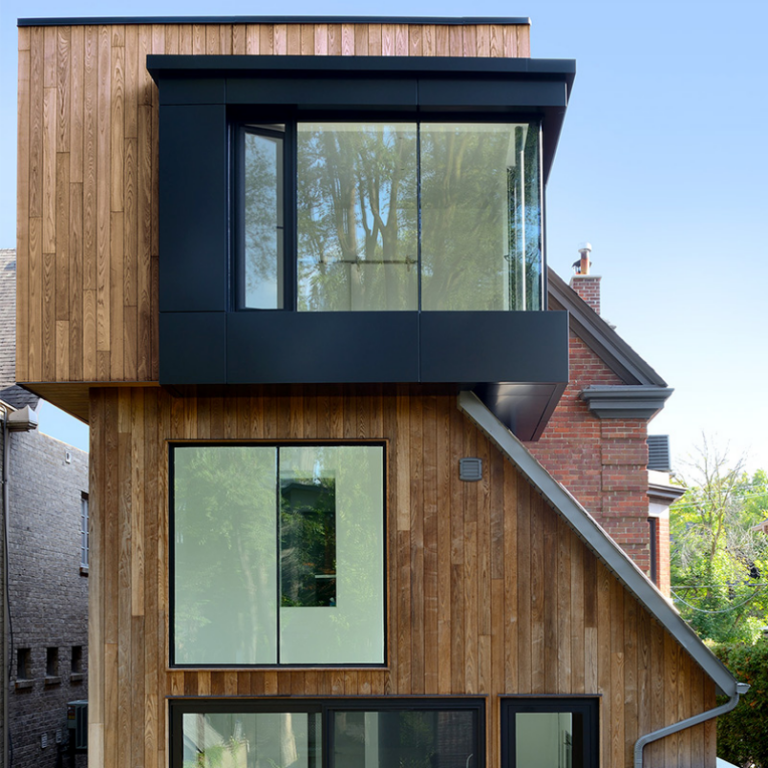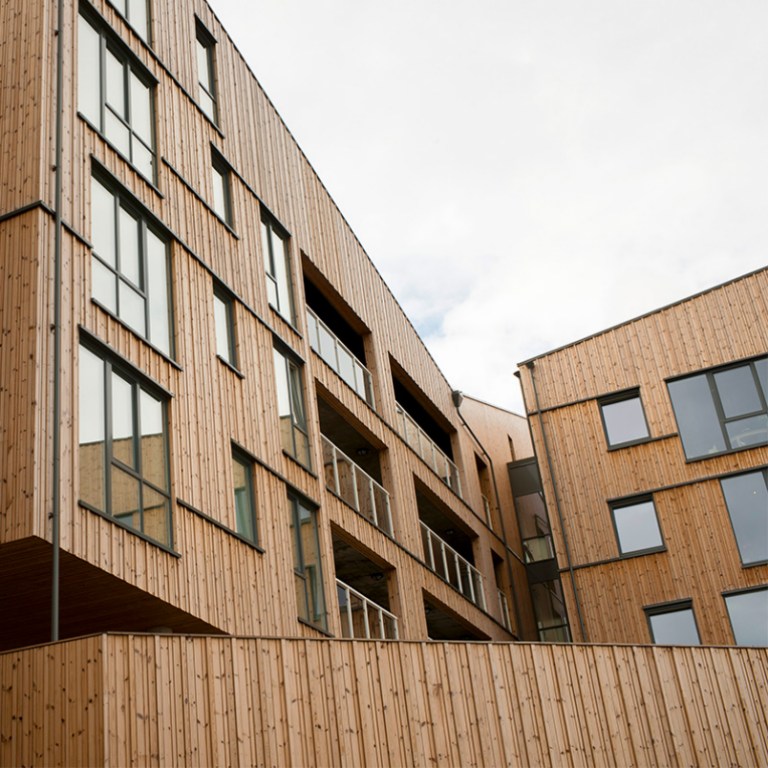Biophilic design isn’t just about how a space looks—it’s about how it feels. It’s about creating environments that flow with nature, bringing the outdoors in and supporting a more sustainable way of living. By weaving in natural elements, we deepen our connection to the environment, helping to boost both our mental clarity and physical well-being. As Manny from The Construction Life puts it, “People are increasingly seeking a deeper connection to their spaces; they want to walk into a room and feel something.”
Core Biophilic Design Principles
There are six primary principles of biophilic design (Kellert, et. al 2008):
- Environmental features: Incorporating natural characteristics such as earth tones, sunlight, water features, and live vegetation into your design.
- Natural shapes and forms: Using shapes found in nature like spirals, arches, or botanical motifs, avoiding rigid, unnatural right angles.
- Natural patterns and processes: Bringing real-life natural properties, such as varied sensory experiences, focal points, and complementary contrasts.
- Light and space: The use of natural light, shadows, spaciousness, and spatial harmony to create vibrant, healthy environments.
- Place-based relationships: Creating designs that connect culture and ecology by using local materials and unique place-based elements.
- Evolved human-nature relationships: Incorporating features that appeal to our innate connection with nature, such as awe, exploration, and a sense of spirituality.
Connecting with Nature through Design
There’s something deeply instinctive about our connection to nature—it’s woven into who we are. Surrounding ourselves with natural elements, whether it’s a few indoor plants, the sound of water, or sunlight streaming through big windows, can have a surprising effect on our mood and well-being. These simple touches don’t just look beautiful; they help lift the weight of daily stress and make us feel more grounded, calm, and energized.
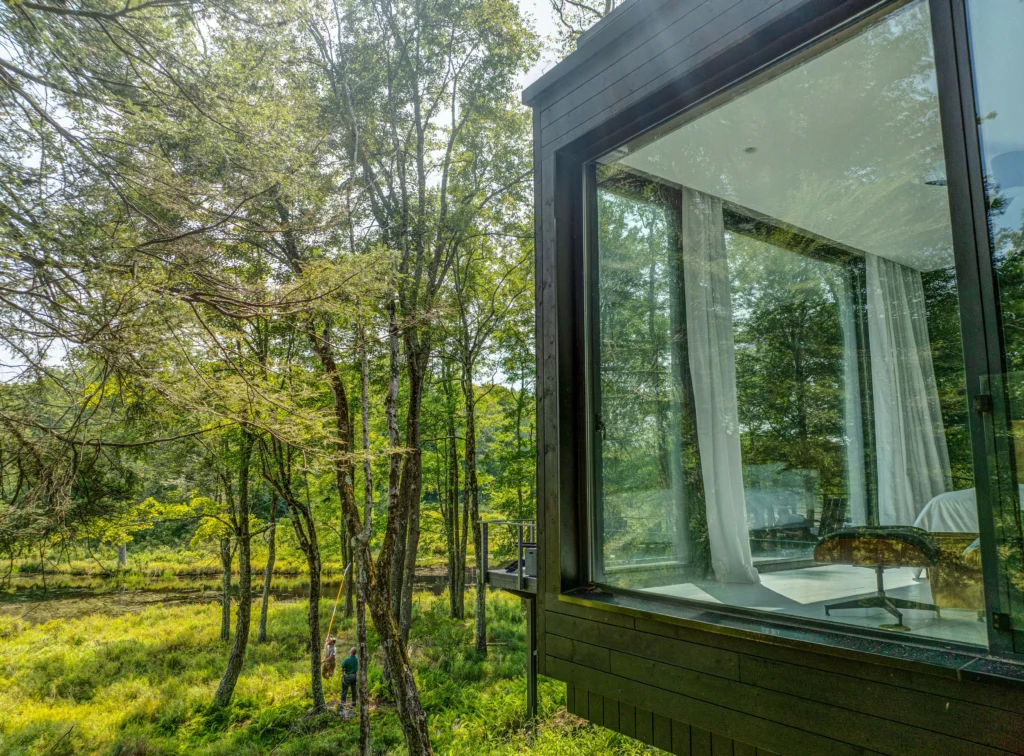
Enhanced Healing & Recovery
Biophilic design can truly make a difference in healing. When healthcare spaces include natural elements like greenery, sunlight, and organic materials, patients often recover more quickly and feel less reliant on medication. In fact, studies have shown that just having a view of nature can speed up healing by as much as 8%. Simple touches like plants, water features, or natural light do more than brighten a room—they lift our spirits and help our bodies heal faster, creating a more restorative environment all around.
Improved Focus & Productivity
Bringing biophilic design into the workplace can really make a difference. Things like natural light, live plants, and open spaces help create an environment where people feel more focused, creative, and productive. These natural elements clear the mind and reduce mental fatigue, making it easier to stay energized and positive throughout the day. Employees often feel less stressed and more connected to their work when surrounded by nature-inspired spaces.
By mirroring elements from the natural world, biophilic design helps stimulate the mind and keep employees engaged throughout the day.
Our Thermory Reola Office was recently reimagined by Interior Designer Külli Salum, who incorporated various wood species (of course!), and Biophilic Design principles – like large windows, filling the office with natural sunlight. Redesigned meeting rooms are lined with bark panels, and named after the trees in which their bark was obtained: birch, aspen, alder.
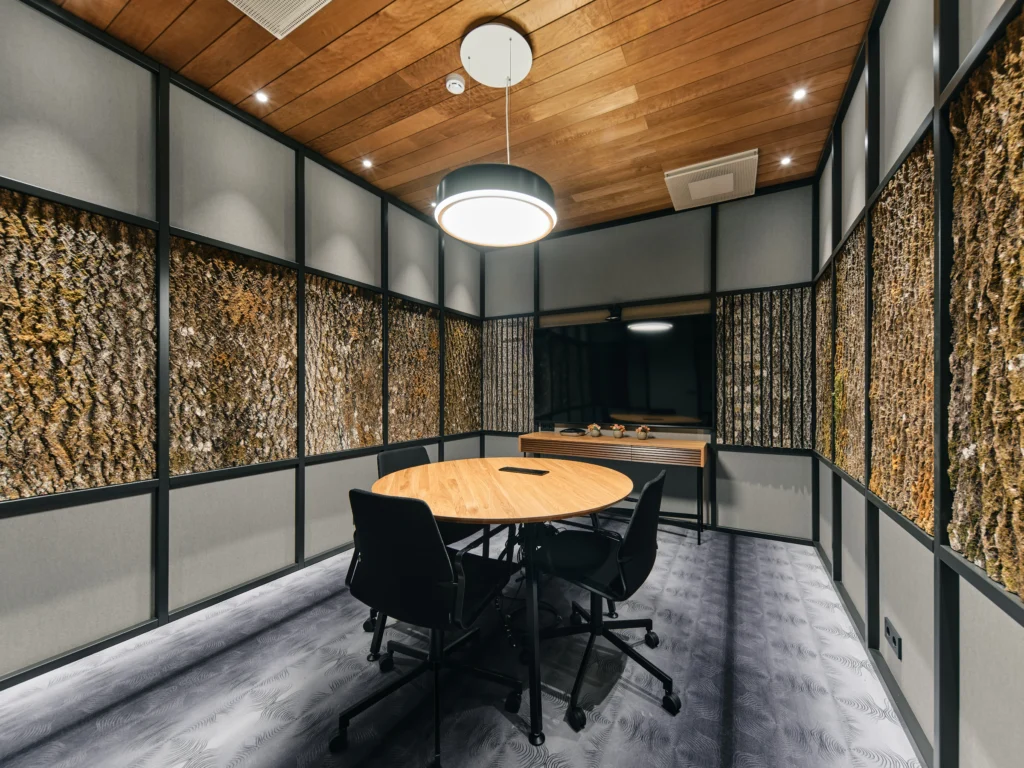
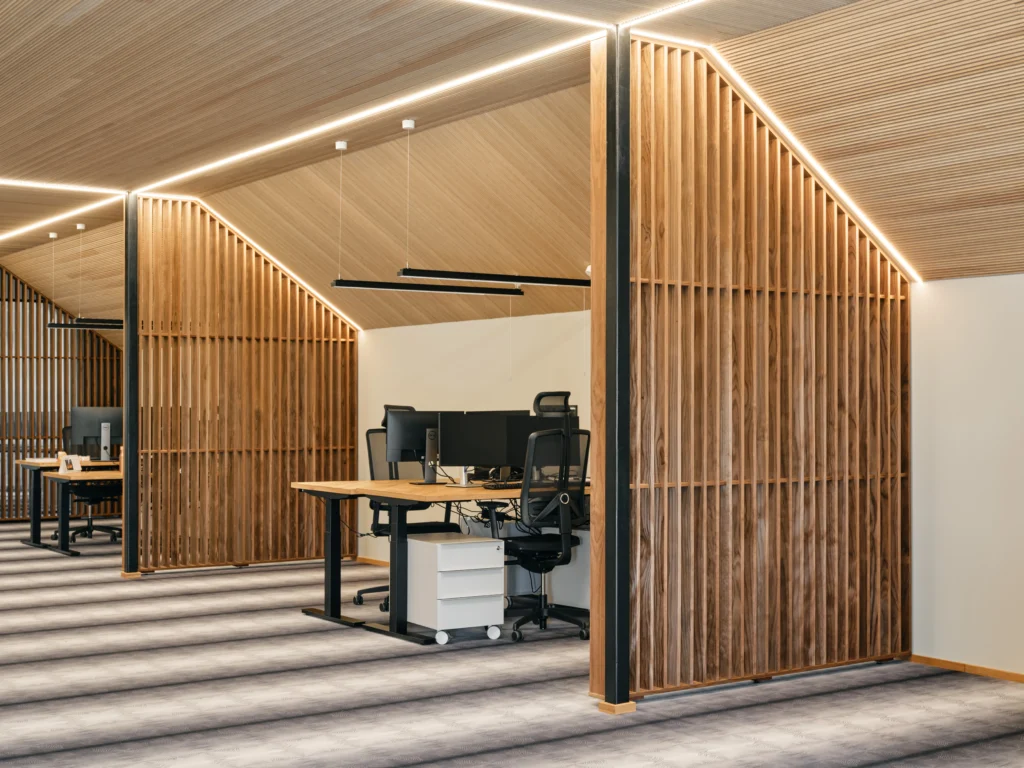
“With the use of wood, the offices look welcoming, peaceful and very cozy, more like a home than an office. If the space makes people feel good, we automatically feel that we are highly valued and appreciated by our employer. This is a big part of feeling happiness at work.”
– Maret Puskar, North American Business Development Manager
Peaceful Spaces for a Calmer Mind
Imagine walking into a space that instantly helps you feel calmer and more at ease. That’s one of the key benefits of biophilic design. By incorporating natural elements—like plants, soft lighting, or earthy textures—these spaces trigger a relaxation response in our brains, lowering heart rates and reducing stress. It’s a natural way to counteract the overstimulation of daily life. With these nature-inspired touches, we create little sanctuaries that promote mental well-being and help us feel more grounded and balanced.
Community Connections
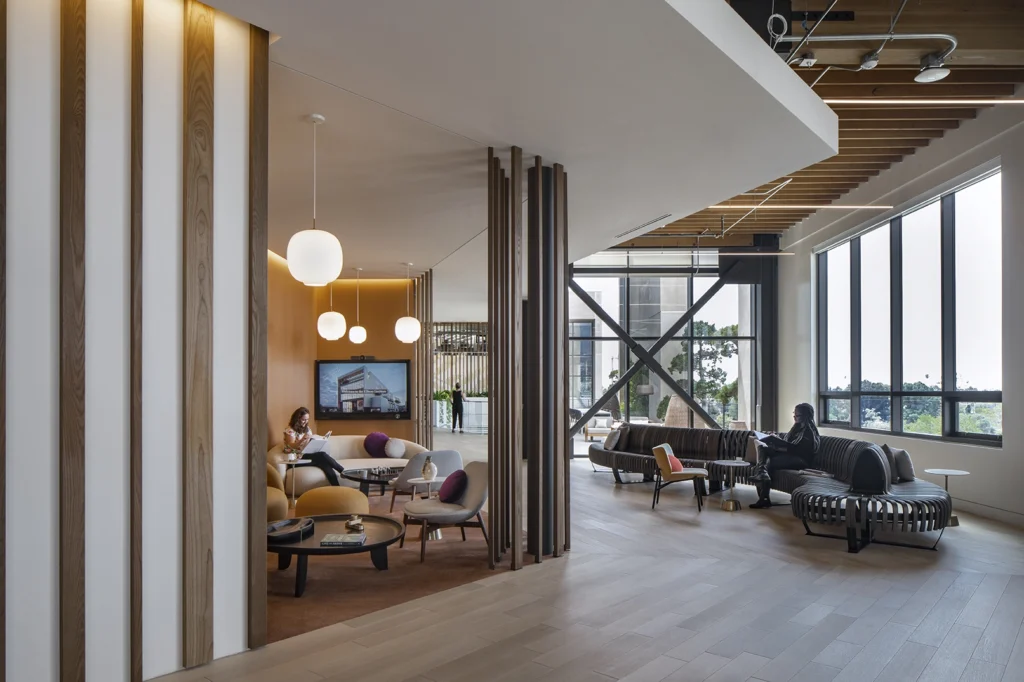
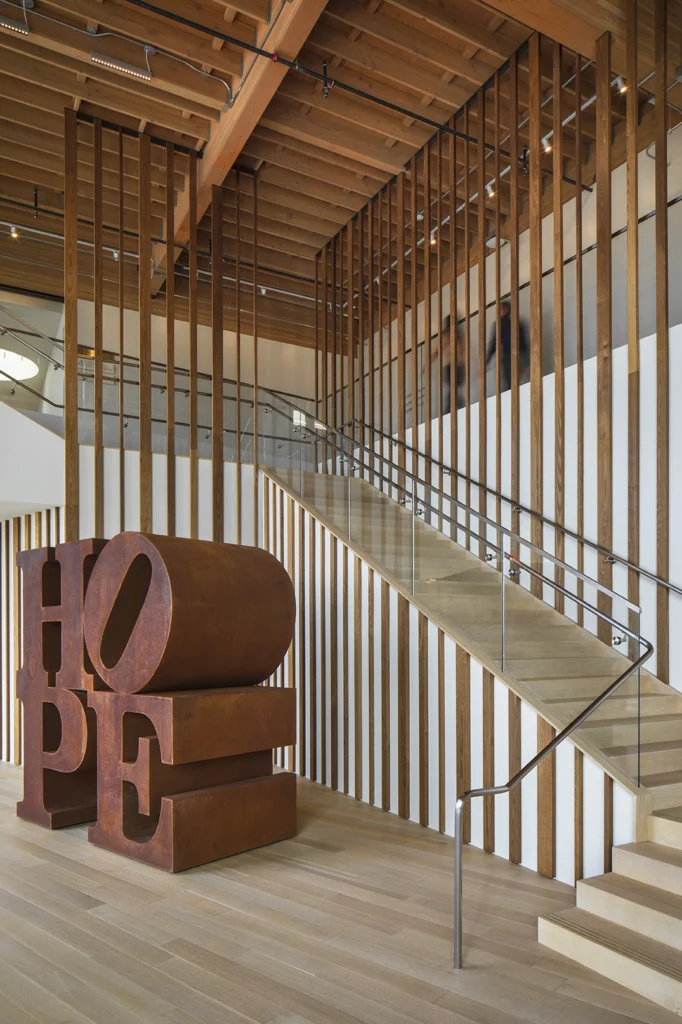
Biophilic design isn’t just about individual well-being—it’s a way to bring people closer together. When we incorporate natural elements, like plants or open, airy spaces, it encourages more social interaction, whether in communal work areas or public gathering spots.
It’s a simple but powerful way to foster a sense of belonging, making communities stronger, more harmonious, and resilient. People are naturally drawn to spaces that reflect nature, where they can truly feel at home.
Power Your Practice With Biophilic Design
Biophilic design is more than just a trend; it’s a powerful way to create spaces that nurture our connection with the natural world, enhancing both our well-being and productivity. By integrating these principles, we can cultivate environments that foster relaxation, creativity, and stronger social bonds.
Be on the lookout for our next CEU eligible course: Biophilic Design in Thermory’s latest Continuing Education Course: “Biophilic Design: Contributions to Green Building Certifications”
Image Credits: Ricky Batista Photography. Art Gray Photography. Tõnu Tunnel. Elvo Jakobson.
